Palena. Glimpses of autumn
2023
Palena is an Italian municipality of 1,224 inhabitants in the province of Chieti in Abruzzo, and is the seat of the union of the eastern Maiella-Verde Aventino mountain municipalities.
You may also like
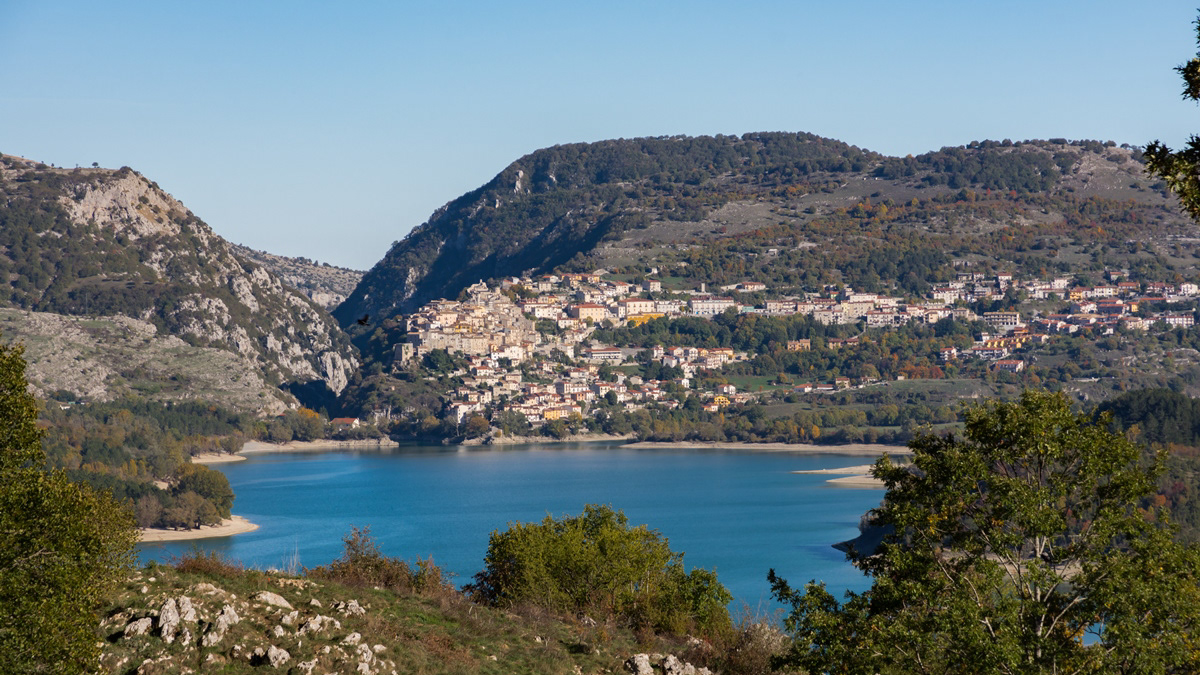
2018
Barrea and its lake (AQ)
Barrea is located in a mountainous area overlooking the Sangro Valley and the Barrea Lake. The inhabited center, located at an altitude of 1,060 m a.s.l., occupies a ledge at the eastern end of the lake enclosed by the steep sides of the Meta mountains to the south and Mount Greco to the north. Its territory is included in the national park of Abruzzo, Lazio and Molise. The lake was formed in 1951 by the damming of the Sangro river and is used for the production of electricity. The Wetland of Lake Barrea, managed by the Abruzzo, Lazio and Molise National Park Authority, has been on the list of areas provided for by the Ramsar Convention since 1976.
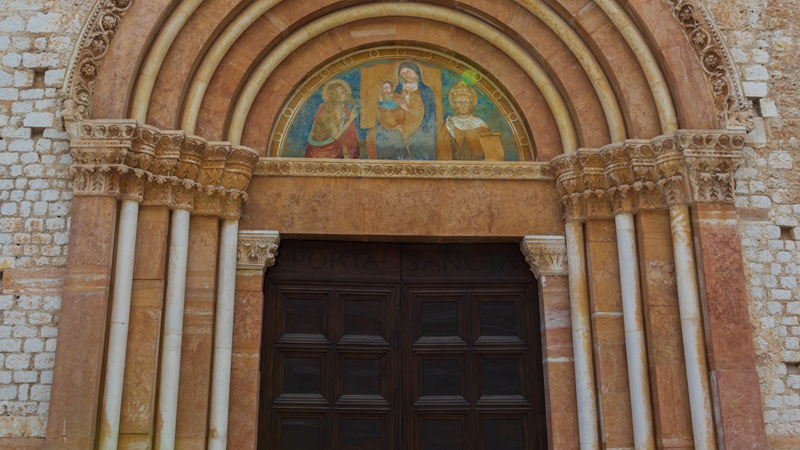
2018
L'Aquila - Basilica of S. M. di Collemaggio
The basilica of Santa Maria di Collemaggio is a religious building in L'Aquila, located just outside the city walls, on the hill of the same name. Founded in 1288 at the behest of Pietro da Morrone - crowned pope here with the name of Celestino V on 29 August 1294 - it is considered the highest expression of Abruzzo architecture, as well as the symbol of the city and was declared a national monument in 1902. Since 1327 houses the remains of the pontiff, currently preserved inside the mausoleum of Celestino V, built in 1517 by Girolamo da Vicenza, master of Andrea Palladio. It is the seat of an annual jubilee, the first in history, established with the Bull of Forgiveness of 29 September 1294 and known as Perdonanza Celestiniana; therefore, it is characterized by the presence of a Holy Door on the side facade. The church, which boasts the title of minor basilica together with the fellow citizens San Bernardino and San Giuseppe Artigiano, has been remodeled several times over the centuries mainly due to the damage caused by frequent earthquakes and presents a mixture of different architectural styles. Following the 2009 earthquake, it was subjected to consolidation and restoration works which ended in 2017.
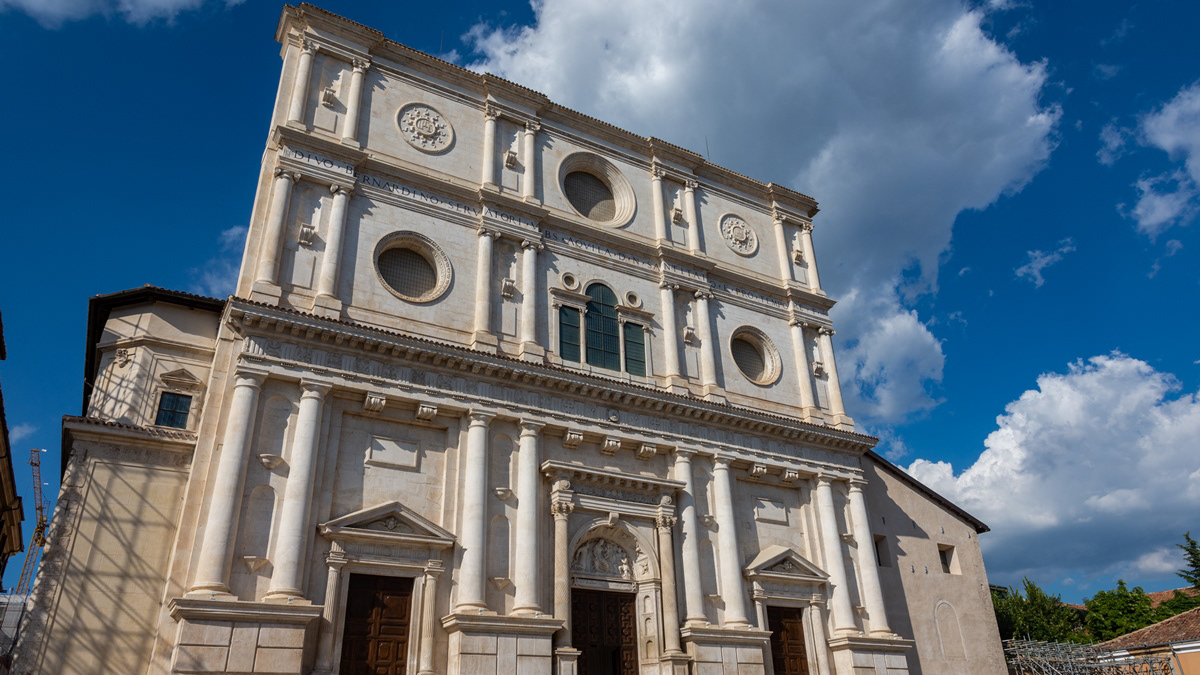
2018
L'Aquila - Basilica of San Bernardino
The basilica of San Bernardino is a religious building in L'Aquila, located in the quarter of Santa Maria. It was built, with the adjacent convent, between 1454 and 1472 in honor of San Bernardino da Siena, whose remains are kept inside the mausoleum of the Saint built by Silvestro dell'Aquila. The façade, erected in the following century by Cola dell'Amatrice with Michelangelo's influences, is considered the highest expression of Renaissance architecture in Abruzzo. The interior, in Baroque style, is due to the reconstruction of the building following the earthquake of 1703 by several designers - including certainly Filippo Barigioni, Sebastiano Cipriani and Giovan Battista Contini - and preserves important works of art by Andrea della Robbia, Francesco Bedeschini, Pompeo Cesura, Rinaldo Fiammingo and Donato Teodoro, in addition to the aforementioned Silvestro dell'Aquila, also author of the mausoleum of Maria Pereyra Camponeschi. The carved wooden ceiling decorated with pure gold is the work of Ferdinando Mosca. It was included in the list of national monumental buildings in 1902 and elevated to the rank of minor basilica by Pope Pius XII in 1946. Due to the earthquake of 2009 which severely damaged the apse and the bell tower, the basilica was subjected to repair and consolidation works and was reopened in 2015.
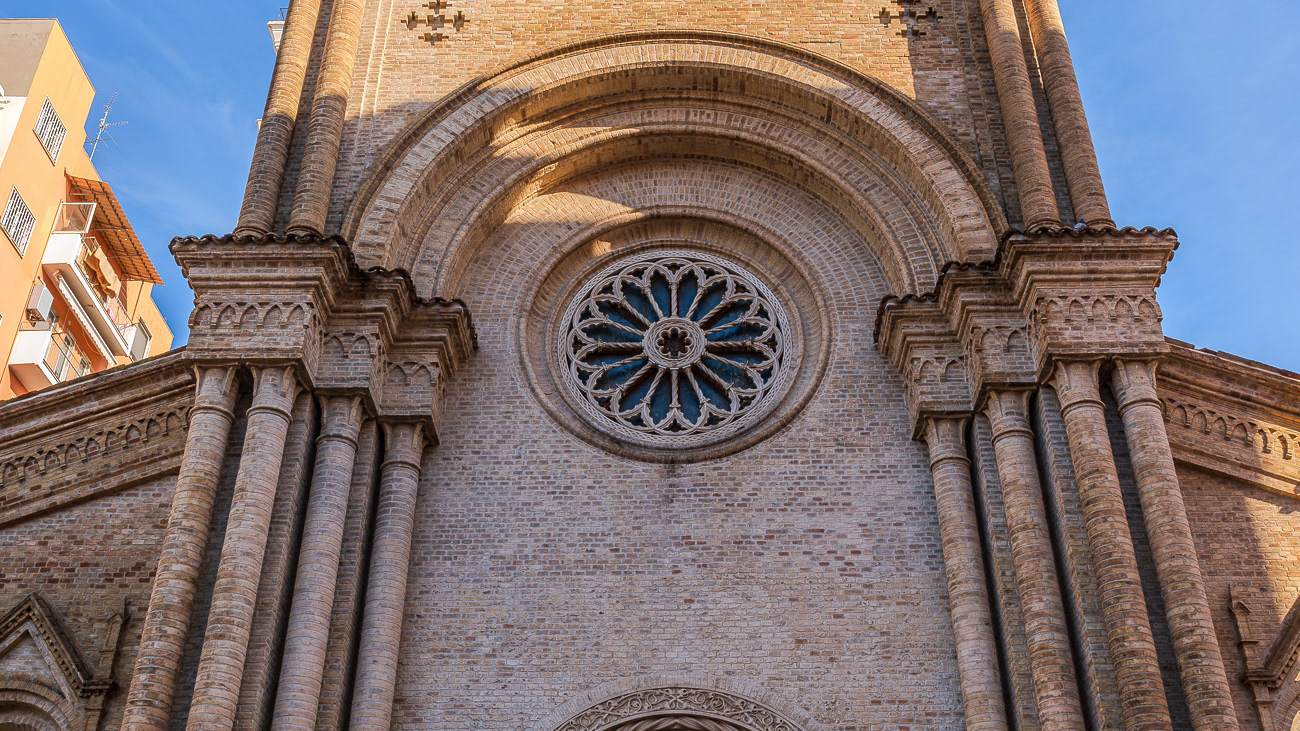
2023
Pescara. Church of the Sacred Heart
It was built in 1886 in neo-Romanesque style. It has a main façade characterized by brick cladding. The interior has three naves, in neo-Romanesque style.
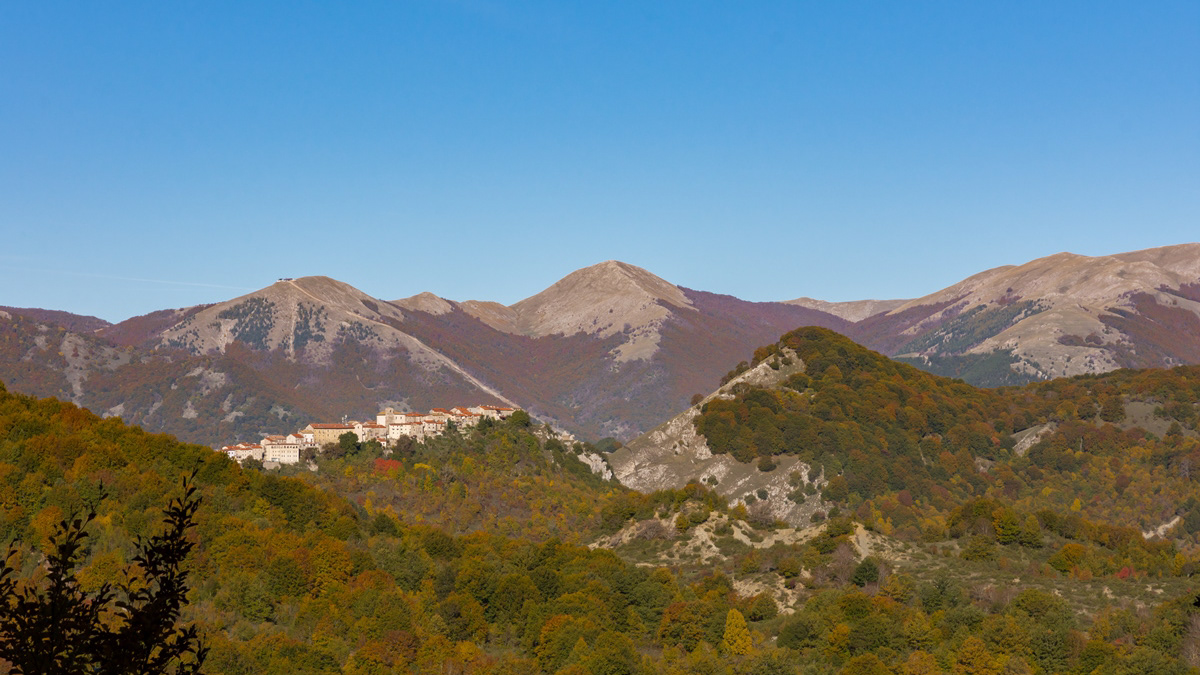
2017
Opi (AQ)
Opi (Opjë IPA: [ˈopjə], in Opian dialect) is a town of about 408 inhabitants in the province of L'Aquila in Abruzzo. Its medieval village is included in the protected area of the national park of Abruzzo, Lazio and Molise. It is one of the most beautiful villages in Italy.
The town is located in the middle of the mountainous group of the Marsicani Mountains, in the center of a mountainous amphitheater formed to the north-east by Monte Marsicano (2,245 m asl) and to the south-east by Monte Amaro (1,862 m) and Monte Petroso (2,249 m asl) . The main watercourse that crosses the municipal territory is the Sangro river that rises on the slopes of Mount Morrone del Diavolo (1,602 m a.s.l.), in the locality of Gioia Vecchio di Gioia dei Marsi. The Sangro, after crossing a flat area called Le Prata, enters a gorge between the Opi hill (1,250 m a.s.l.) and Monte Marrone (1,354 m a.s.l.) from where it continues its path along the upper Sangro valley.
The Fondillo stream, one of the first tributaries of the Sangro river, which gives its name to the valley of the same name, arises from one of the numerous karst springs present in the Opiano territory. The rugged nature of the wooded mountains has allowed the survival of a rich and varied fauna.
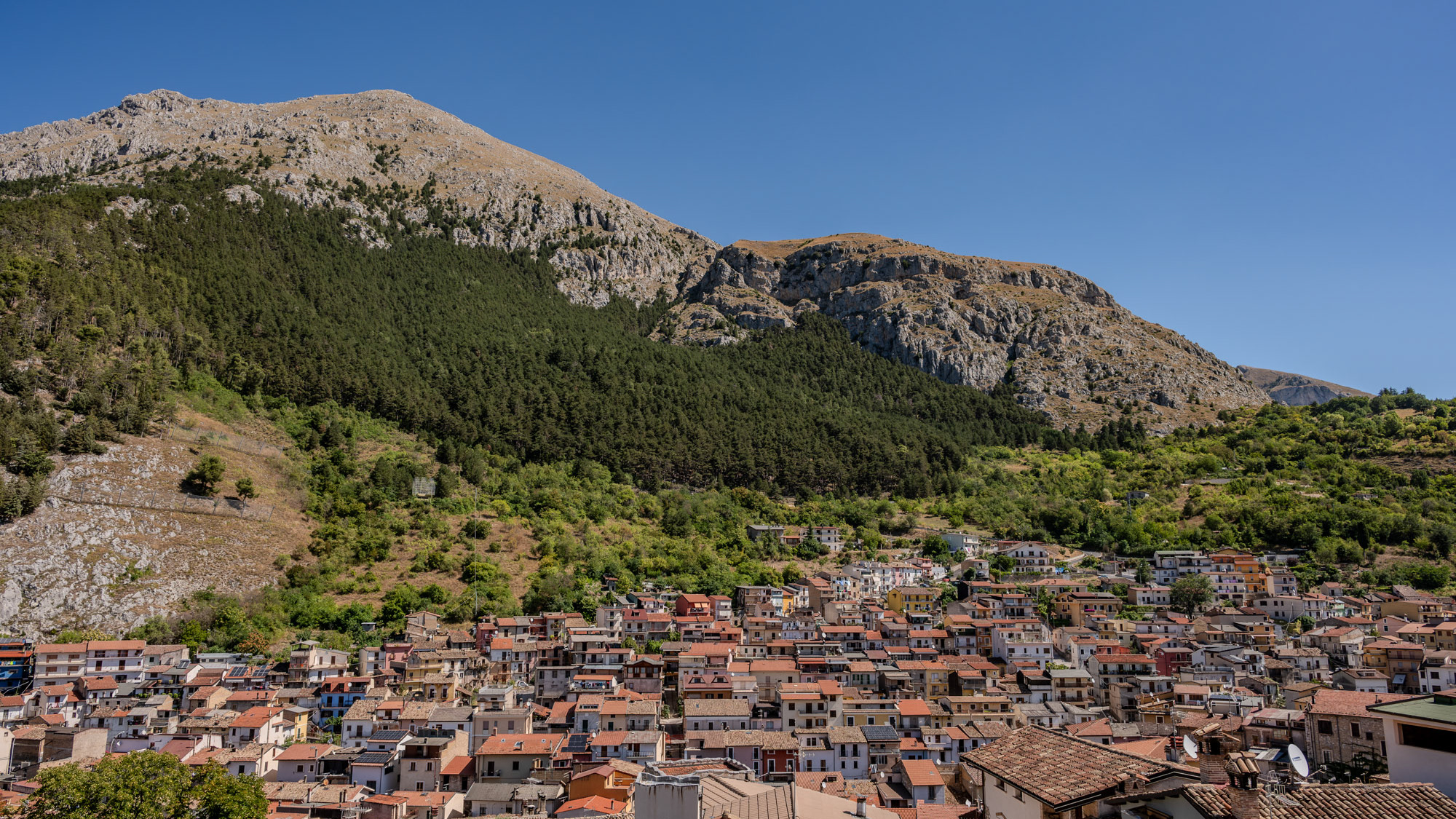
2024
Celano and the Fucino Plain
Celano is a splendid town in Abruzzo, overlooking the Fucino plain, composed of a medieval village which in the upper part still preserves the Castle dating back to the 14th century.
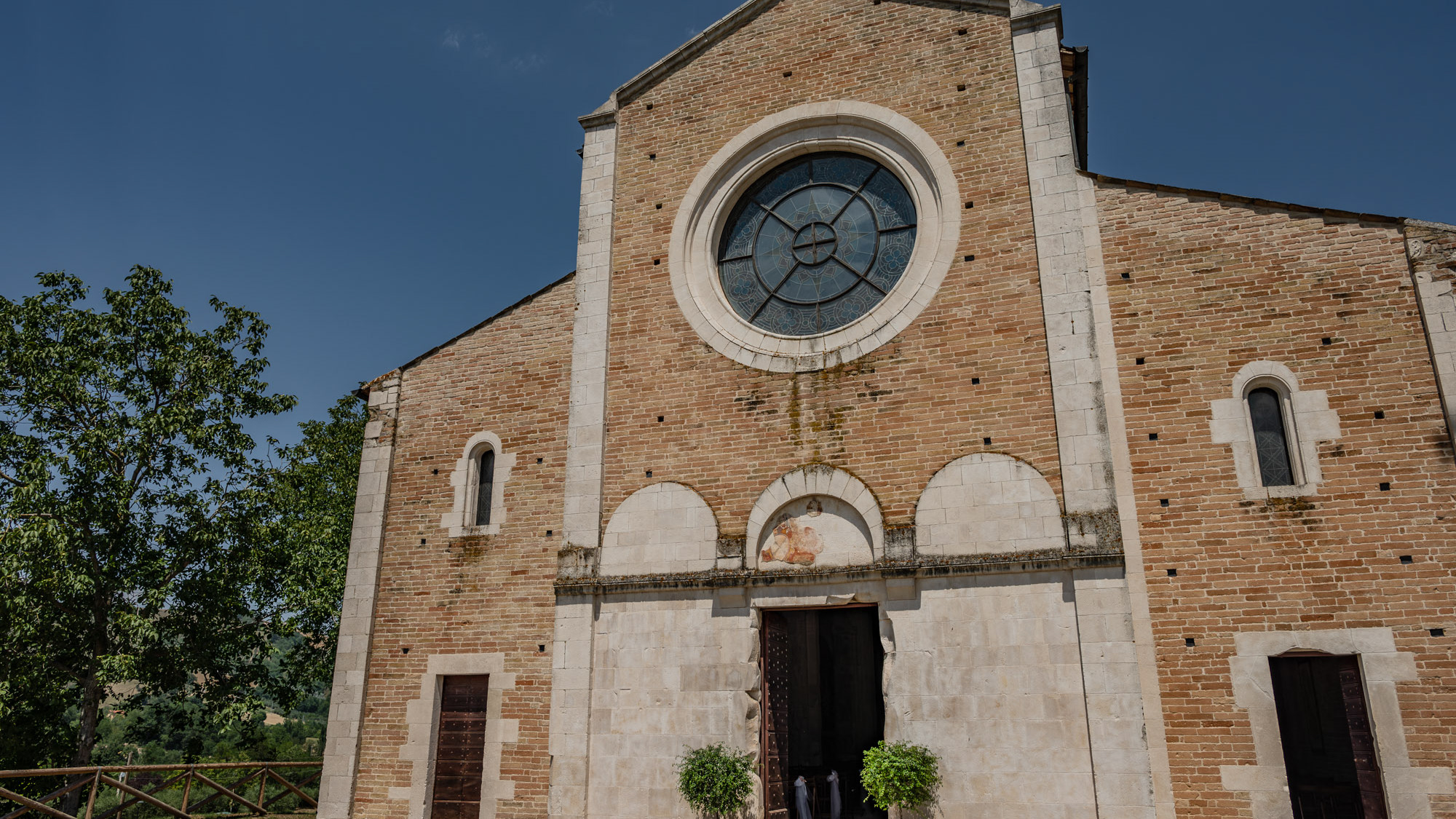
2024
Castel Castagna. The church of Santa Maria di Ronzano
The church of Santa Maria di Ronzano stands on a hill in the Mavone valley. The building belonged to the abbey monastic complex of the Benedictine order who also had the convent here.
2023
Sulmona. Complex of the Santissima Annunziata.
The Santissima Annunziata complex is the most famous and representative monument of the city of Sulmona, declared a national monument in 1902. The main entrance to the complex is on the Annunziata square although other interesting visual glimpses of the building, especially for architectural interest, are admirable from the adjacent streets, via Pantaleo and via Paolina. The church, founded in 1320 by the confraternity of the Compenitenti together with the annexed hospital, does not retain traces of the original construction, both due to the damage suffered in the earthquake of 1456 and due to the architectural transformation interventions which radically modified the original structure of the sixteenth century. Furthermore, another ruinous seismic event, that of 1706, led to a new, important reconstruction intervention which gave the church a Baroque appearance, with an imposing façade with two orders of columns, the work of Maestro Norberto Cicco from Pescocostanzo ( 1710). The interior is divided into three naves and is covered with stuccos. Among the paintings that embellish the church are the frescoes by Giambattista Gamba on the vaults and the canvases on the side altars, among which the Pentecost of 1598 by a Florentine master and the Communion of the Apostles by Alessandro Salini stands out for their quality. The apse instead presents two works by Giuseppe Simonelli, a pupil of Luca Giordano, the Nativity and the Presentation in the temple and an Annunciation by Lazzaro Baldi, a Tuscan artist who was a pupil of Pietro da Cortona. The choir, in wood, was made by the local artist Bartolomeo Balcone between 1577 and 1579, while the part underneath the organs, in a vaguely rococo style, in carved and gilded wood, is by Ferdinando Mosca. The organs, on the other hand, are the one on the left side by Tommaso Cefalo di Vasto (1749) and the one on the right side was built by the Fedeli di Camerino in 1753. At the end of the right aisle is the altar of the Virgin, in polychrome marble, a work partly executed by the Roman artist Giacomo Spagna (1620), with subsequent contributions by artists from Pescocostanzo. On the right side, shortly after the entrance, there is the tomb of Panfilo Serafini, a Sulmona patriot who died in 1864. The sacristy has carved furniture dating back to 1643 with a series of sacred furnishings from the Baroque era and Neapolitan-made silverware; there are numerous pieces from the church that are placed on display in the local Civic Museum. The bell tower (built between 1565 and 1590, imposing, just over 65 meters high, has a square plan with sides of 7.20 m; it is built on two floors with a pyramidal spire and 4 mullioned windows on each floor. It is the bell tower and tallest tower in Abruzzo.The church was reopened for worship in December 2012 after three years of closure due to the 2009 earthquake.
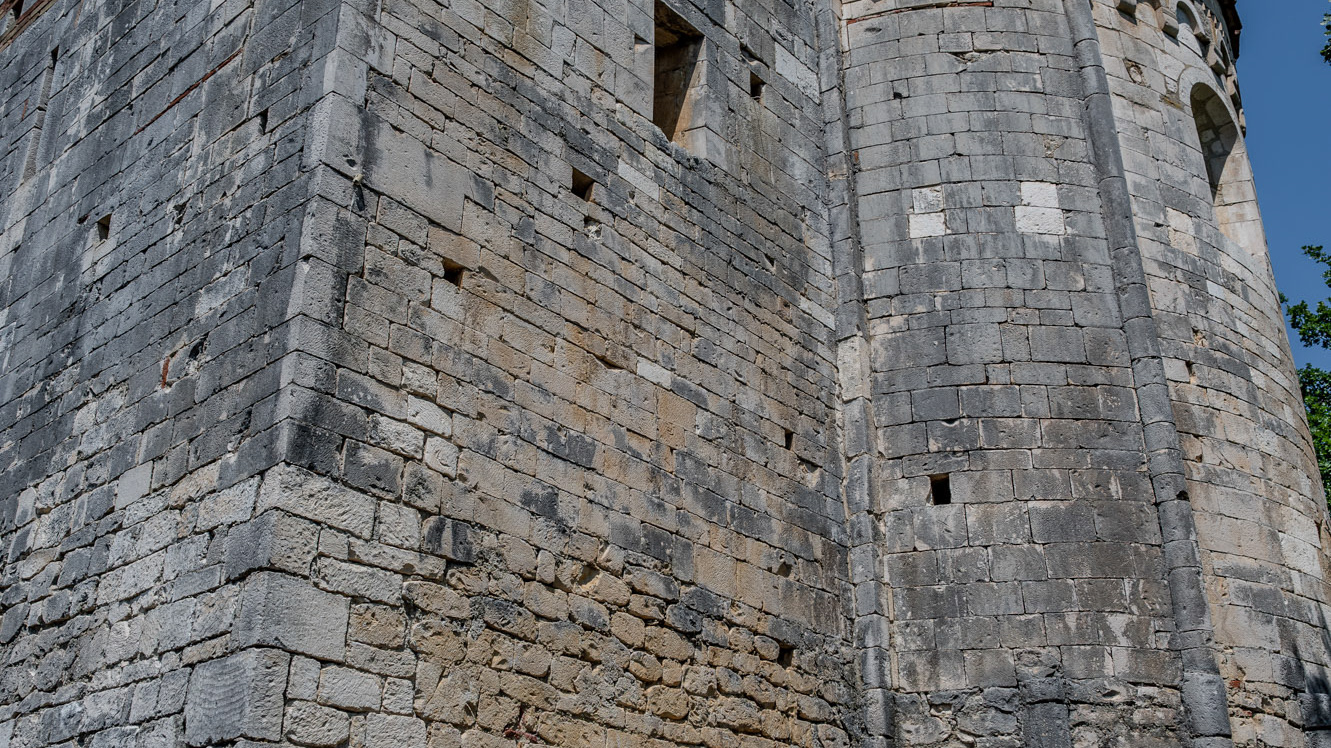
2024
Isola del Gran S. The church of S Giovanni ad Insulam
The church of San Giovanni ad Insulam, also known as the church of San Giovanni al Mavone, stands isolated on a small hill that flanks the Mavone river in the valley of the same name.

2025
Crecchio. The Ducal Castle De Riseis-D'Aragona
The castle is composed of four corner towers that enclose as many buildings. It is surrounded by a perimeter of walls that also enclose a garden.
